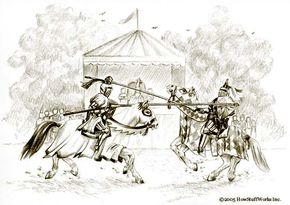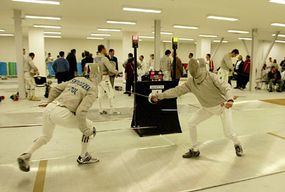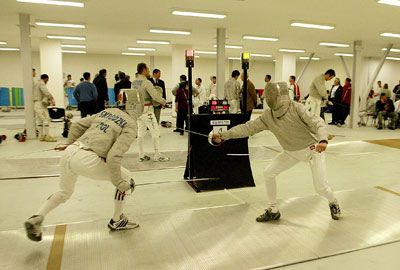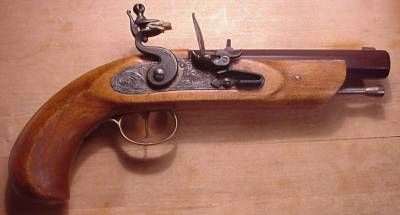In 1777, a committee of Irishmen drew up the dueling code that would come to be used widely throughout Europe and America. The 1777 Irish code was called the Code Duello, and you can read the complete set of rules at PBS.org: Code Duello. This code was so popular that people worldwide came to see it as the "official" rules of dueling. In fact, the U.S. Navy included the text of the Code Duello in the midshipman's handbook up until dueling by naval officers was finally banned in 1862 (Holland, pg. 142).
Highlights of the rules include the steps of an apology, might call off the duel; proper dueling etiquette in terms of dignified behavior; the role of seconds; and what constitutes the end of a duel.
Apologies
An apology on the part of the challenged could avert a bloody duel if delivered properly. Keep in mind that most duels were carried out when one man offended another's honor. As such, the proper apology would logically help solve the problem, even once the duel had already begun. The Code Duello dictates a complex method of deciding who should apologize first:
Rule 1. The first offense requires the first apology, though the retort may have been more offensive than the insult. Example: A tells B he is impertinent, etc. B retorts that he lies; yet A must make the first apology because he gave the first offense, and then (after one fire) B may explain away the retort by a subsequent apology.
The rules also dictate when an apology can be accepted, thus preventing the duel, and when no verbal apology will be sufficient:
Rule 5: As a blow is strictly prohibited under any circumstances among gentlemen, no verbal apology can be received for such an insult. The alternatives, therefore -- the offender handing a cane to the injured party, to be used on his own back, at the same time begging pardon; firing on until one or both are disabled; or exchanging three shots, and then asking pardon without proffer of the cane ...
Dueling Etiquette
A duel is not a brawl. It is a controlled battle between gentlemen of honor. As such, a certain level of dignity was expected of all participants. Rule 13 is one that describes dignified dueling behavior. It is also one that was frequently broken, since many duelists did not really want to die, kill or maim. They only wanted to defend their honor. Rule 13 states:
No dumb shooting or firing in the air is admissible in any case. The challenger ought not to have challenged without receiving offense; and the challenged ought, if he gave offense, to have made an apology before he came on the ground; therefore, children's play must be dishonorable on one side or the other, and is accordingly prohibited.
Since the holding of the duel itself would usually be enough to satisfy honor, duelists might use dummy bullets, or declare ahead of time that they would fire their weapon into the air or at a non-vital area of their opponent's body. The Code Duello frowned on this.
The Code also encourages duelists to sleep on their wounded pride and then duel with a calm demeanor the next day: Rule 15 states:
Challenges are never to be delivered at night, unless the party to be challenged intend leaving the place of offense before morning; for it is desirable to avoid all hot-headed proceedings.
Seconds
The role of the seconds is spelled out in several rules. (Note Rule 18's reference to smooth-bored guns as opposed to rifled weapons.)
- Rule 18. The seconds load in presence of each other, unless they give their mutual honors they have charged smooth and single, which should be held sufficient.
- Rule 21. Seconds are bound to attempt a reconciliation before the meeting takes place, or after sufficient firing or hits, as specified.
The Code Duello acknowledges that the seconds might get involved in the fight themselves, as mentioned in the previous section. The Code is highly specific as to how this involvement might occur:
- Rule 25. Where seconds disagree, and resolve to exchange shots themselves, it must be at the same time and at right angles with their principals.
When a Duel is Over
Dueling "to the death" is not considered desirable in the Code Duello, although this may have been the ultimate end to many duels. Remember: Dueling is about recovering honor, not about killing. Rule 5 states:
... If swords are used, the parties engage until one is well blooded, disabled, or disarmed; or until, after receiving a wound, and blood being drawn, the aggressor begs pardon.
Rule 22 addresses the issue as well:
Any wound sufficient to agitate the nerves and necessarily make the hand shake, must end the business for that day.
Perhaps one of the most important rules of dueling does not involve the mechanics of the duel itself, but rather who is allowed to duel. In medieval Europe, dueling was the sport of noble-born men. Although commoners did fight and certainly did face each other in contests that could be called duels, an actual, honor-bound duel had to be conducted between two men of noble rank. One reason for this was economic -- swords are expensive weapons, and not every peasant had one. But it was also a means of distinguishing the upper and lower classes. Many countries had laws forbidding commoners to fight amongst themselves, while dukes, princes and even kings were expected to duel each other.
What reason did nobles have for constantly fighting each other to the death? Read the next section to find out.






